SUMMARY
VENOM: Highly Toxic - Potentially Lethal
PREVALENCE: Rare
ACTIVE PERIOD: Active during the day
KEY ID FEATURES: Very large, hooded when disturbed, distinctive banding running the length of the body
BEHAVIOR: Fast, defensive and willing to bite if scared, will rush forward quickly if cornered, King Cobras should be given a wide berth if encountered
SIZE: Very Large - 3m+
IUCN: VU - Vunerable
OTHER: Can be mistaken with rat snakes when not hooded
VENOM REVIEW*
COMPOSITION: Post-synaptic neurotoxins, Cardiotoxins, Necrotoxins (possibly present), EXTREMLY HIGH VENOM YIELD.
LOCAL EFFECTS: Pain, swelling, necrosis.
GENERAL EFFECTS: Nausea, headache vomiting, general pain, dizziness, diarrhoea, collapse and/or convulsions, potential paralysis, possible bradycardia, possible shock, high lethality potential, .
TREATMENT: Antivenom.
*INFORMATION ON VENOM OBTAINED FROM WWW.TOXINOLOGY.COM
GALLERY
IMPORTANT: Many snakes have significant variance in coloration and pattern even within the same species. There can also be extreme differences in appearance from juveniles to adults so it is important to never assume you have properly identified a snake.
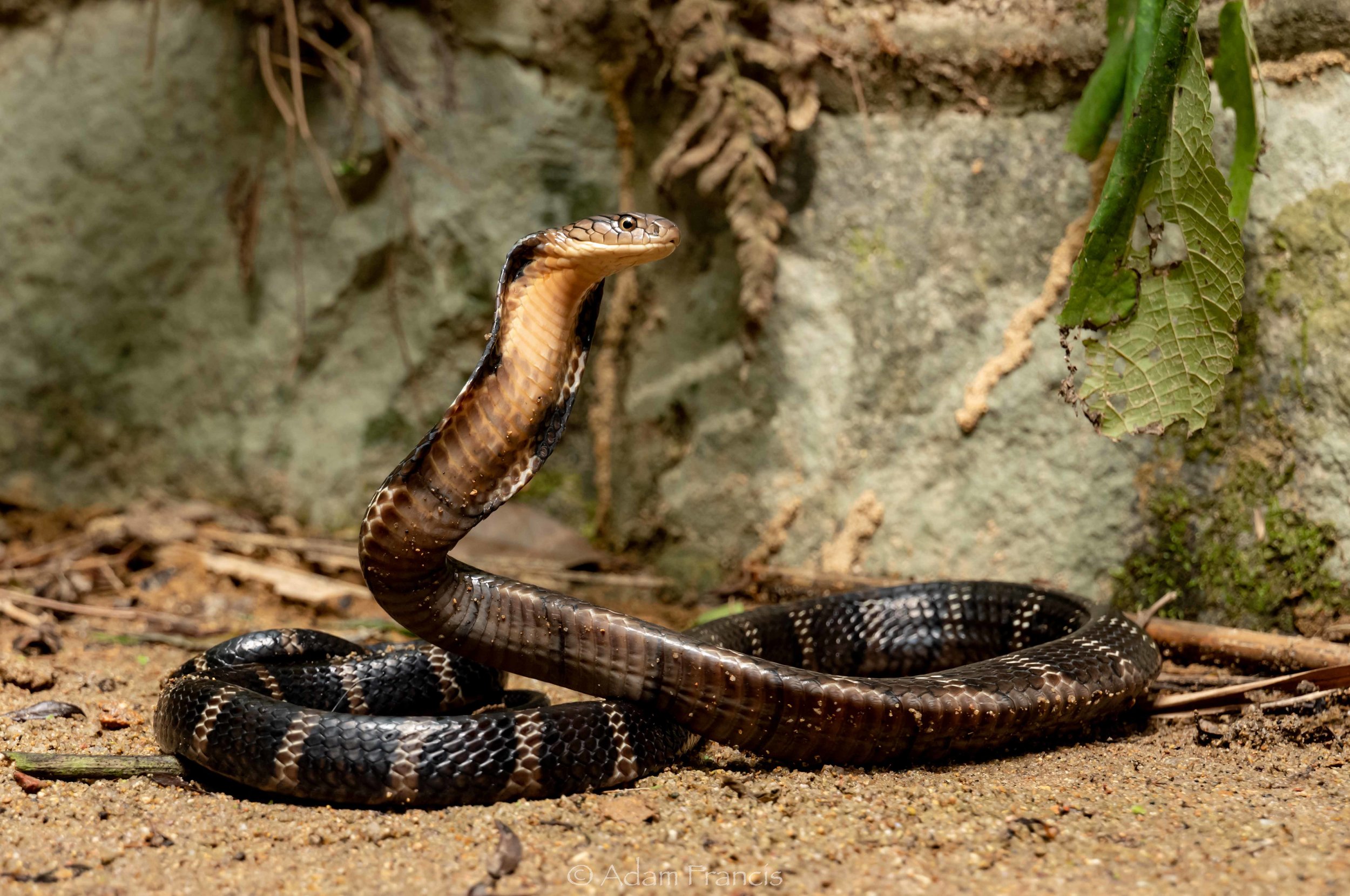
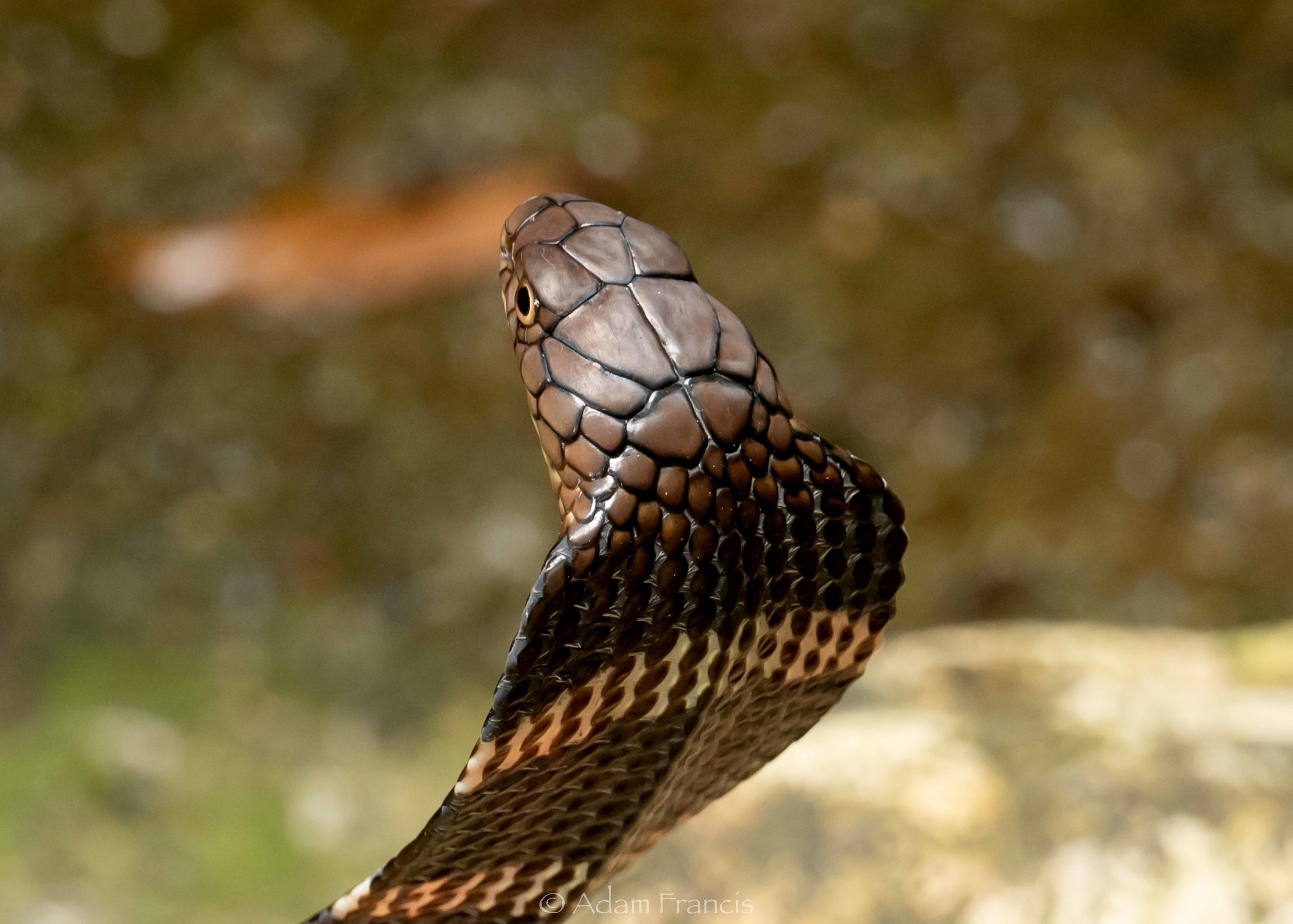
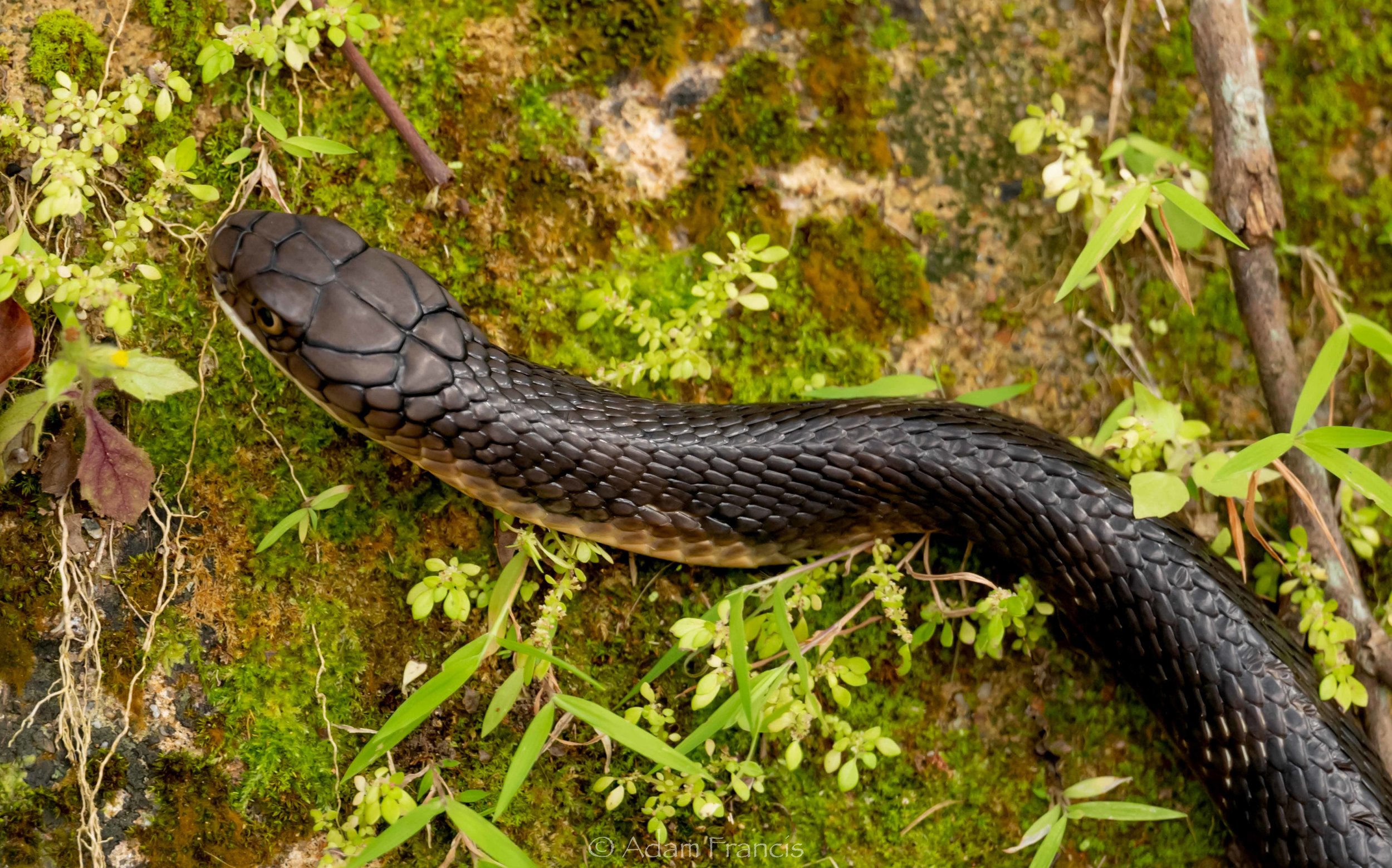
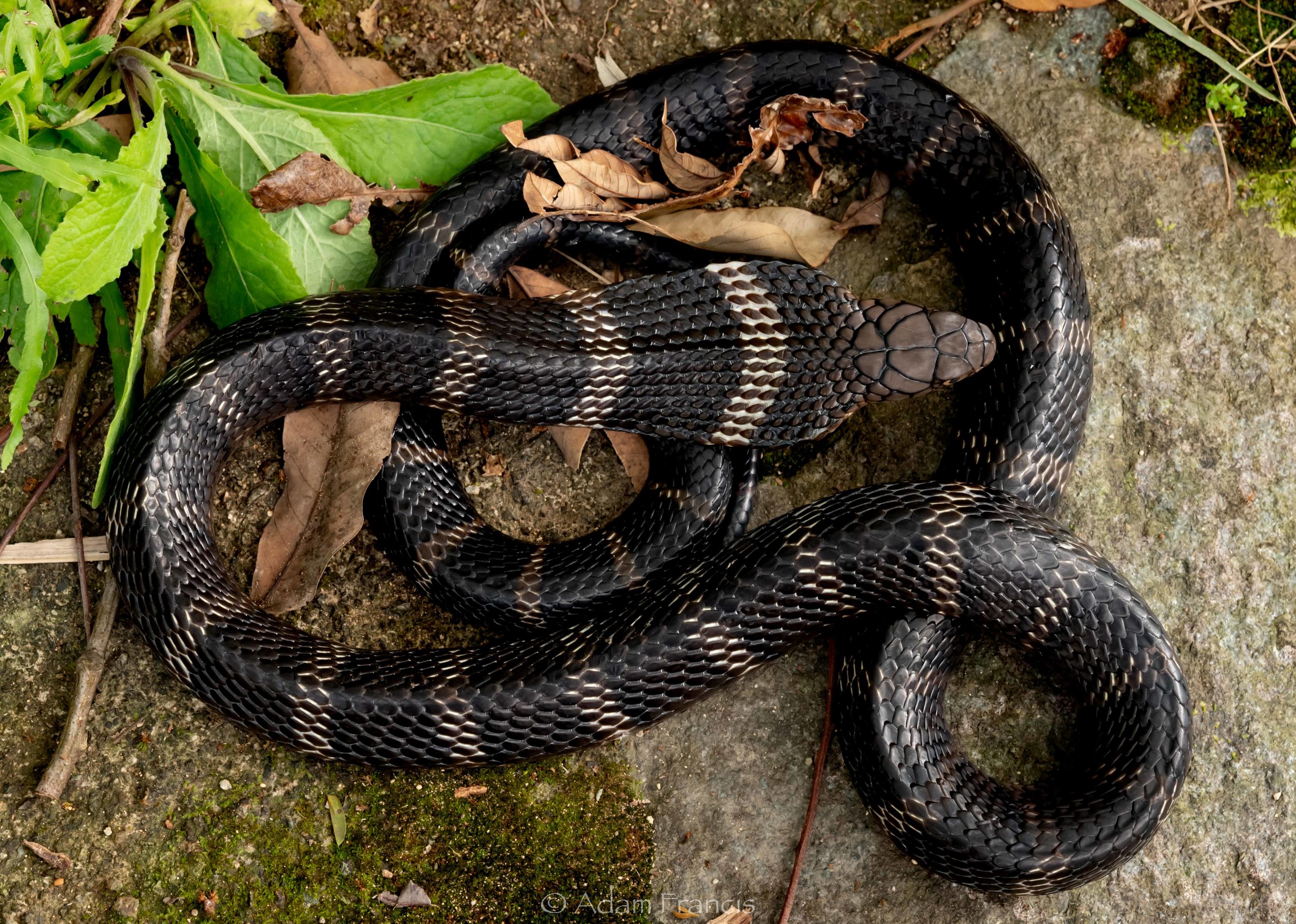
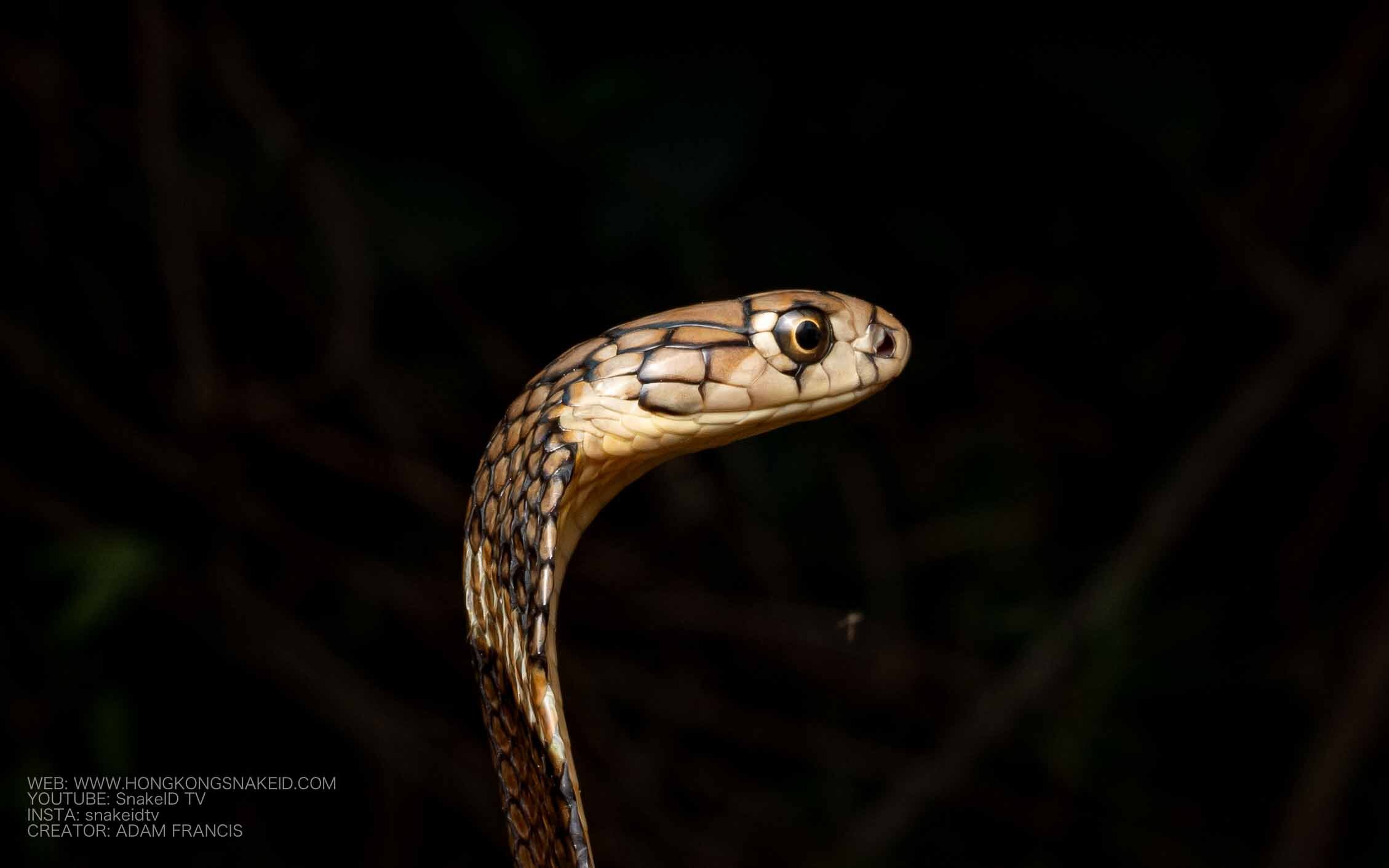
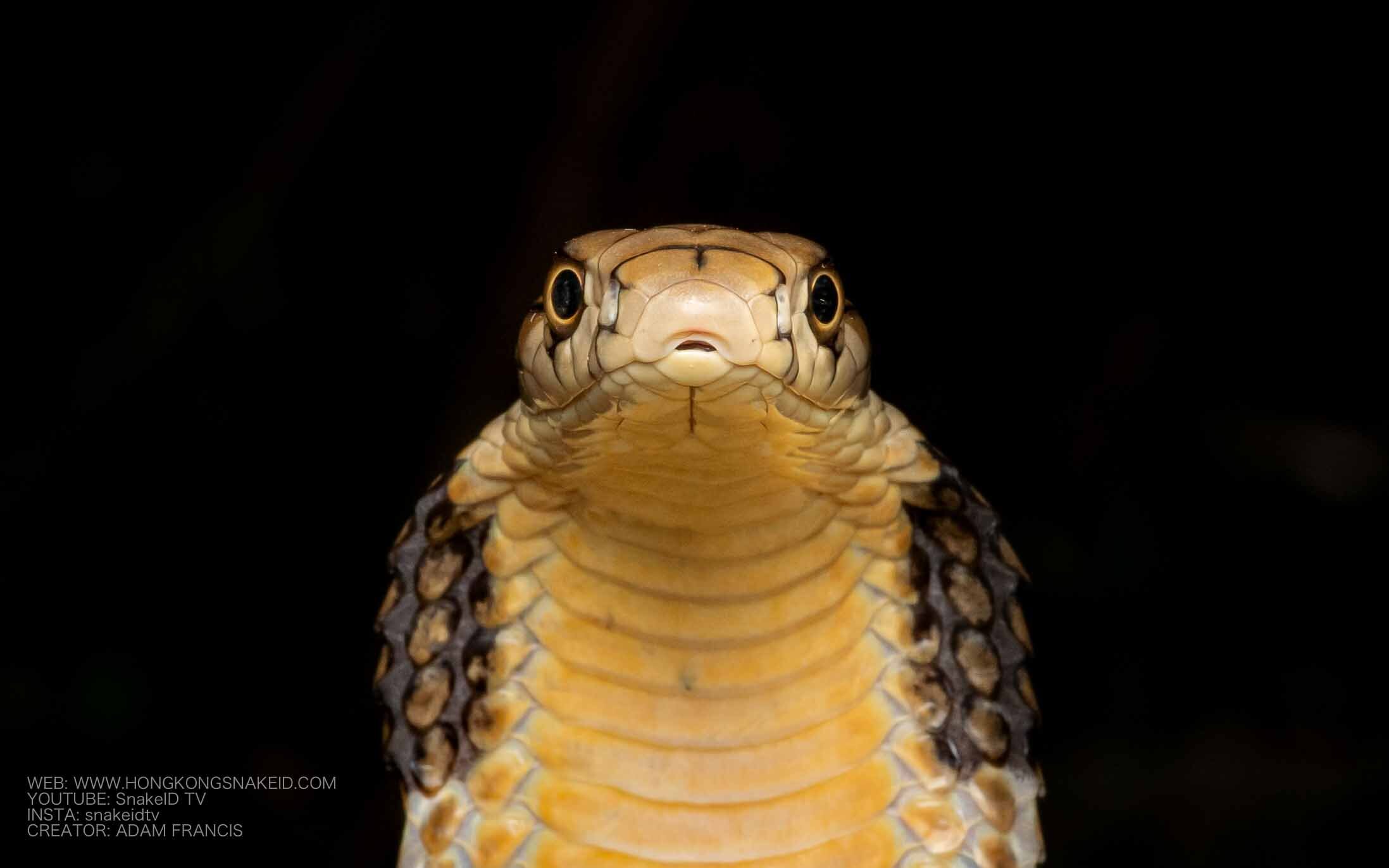


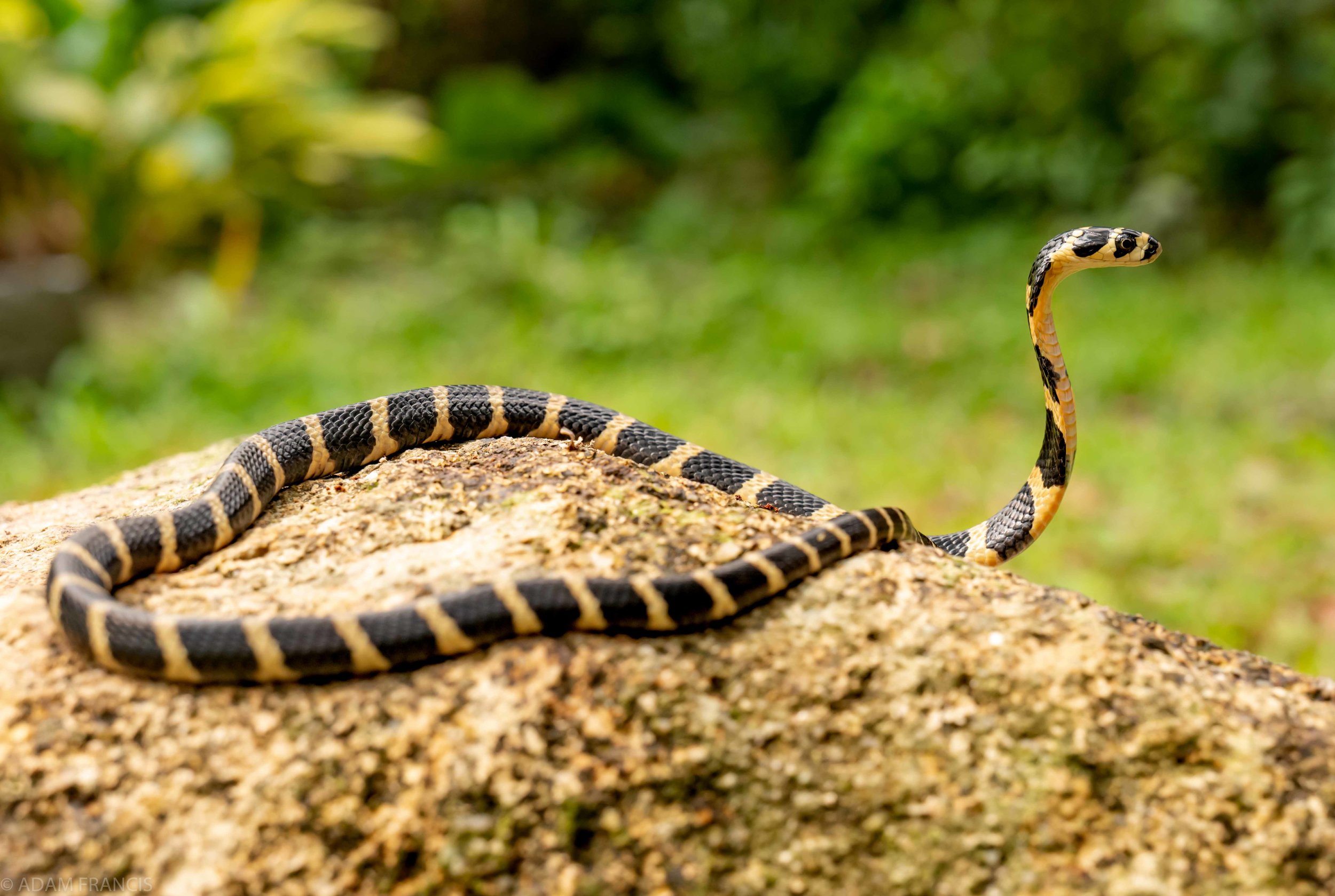
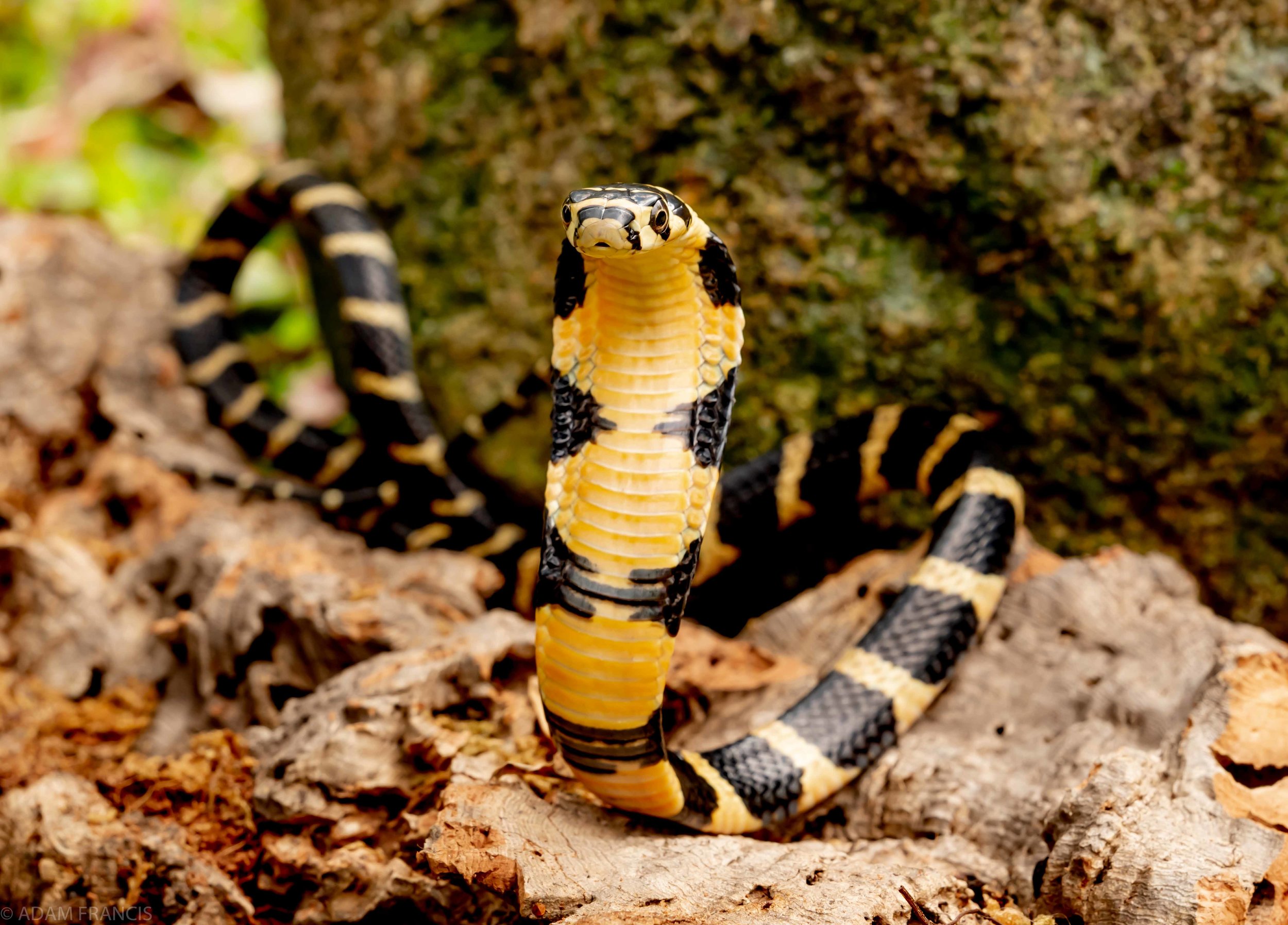
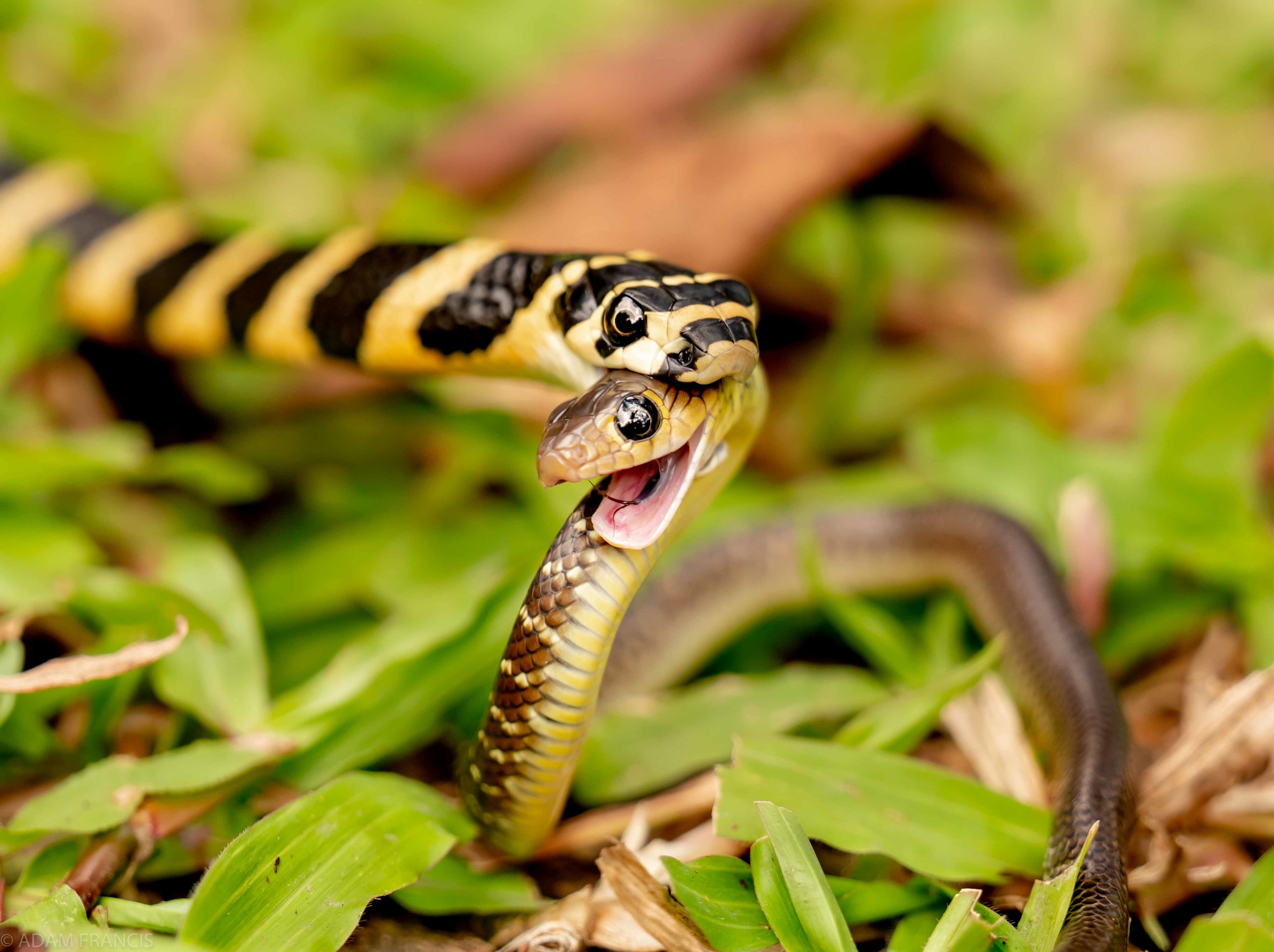
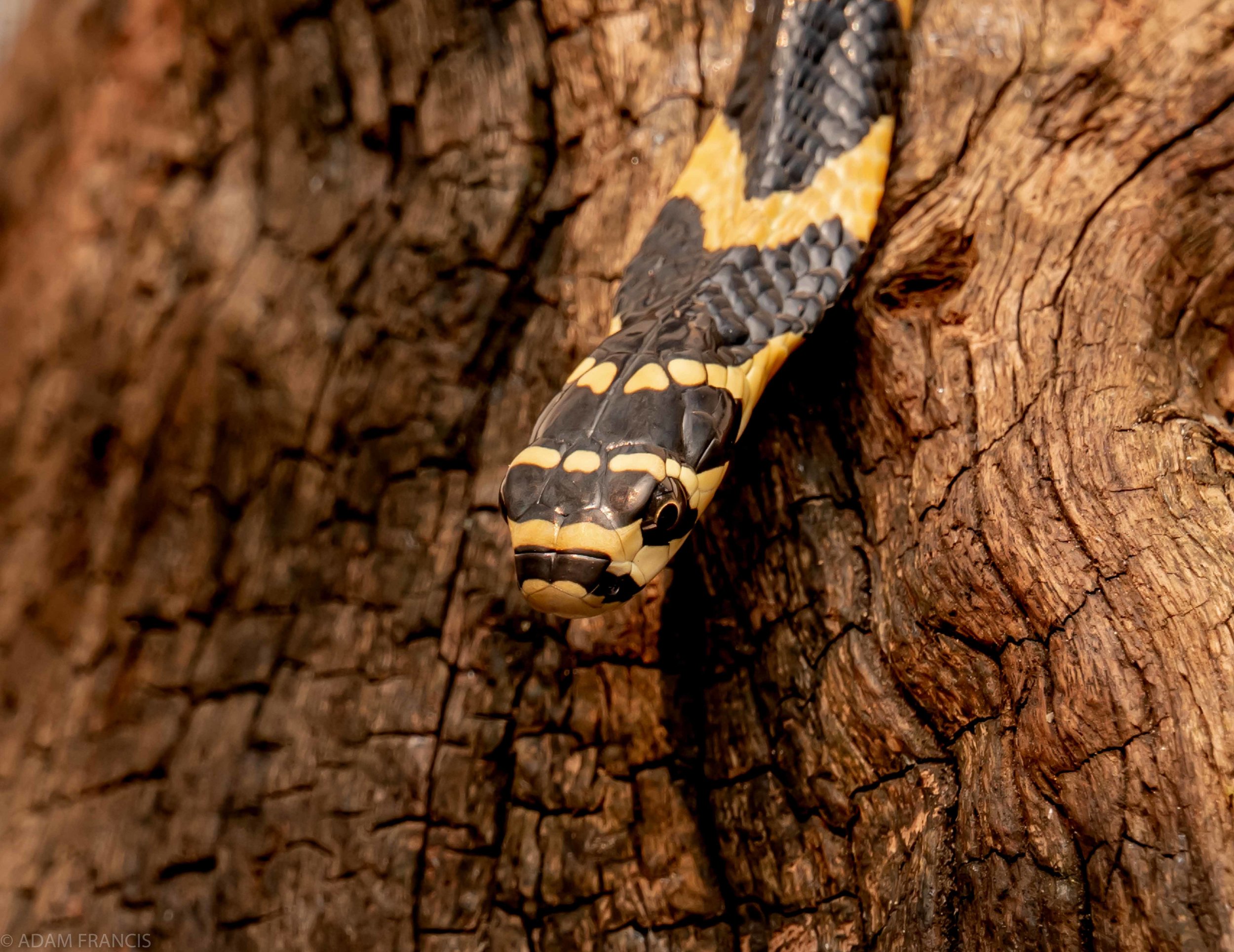
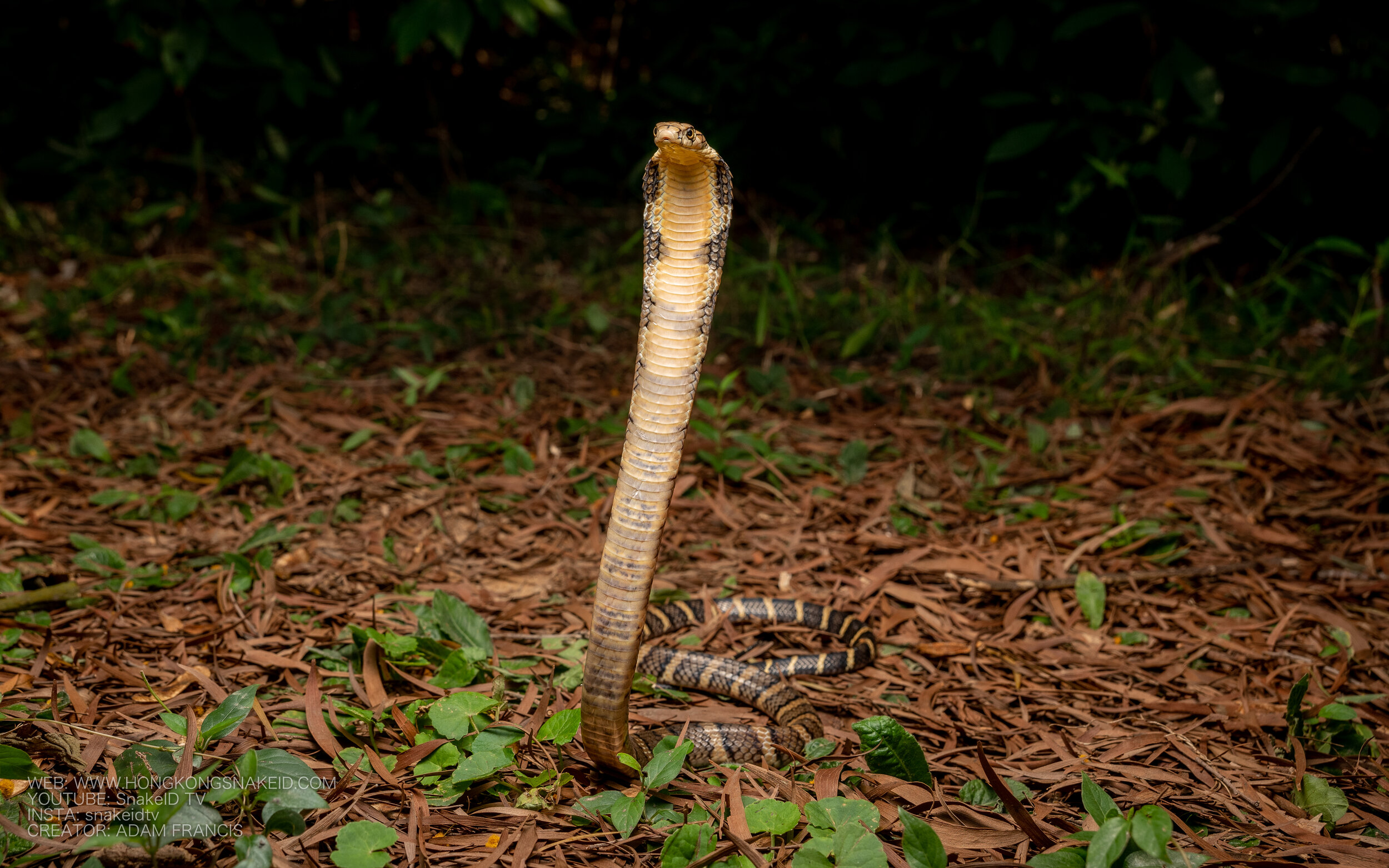
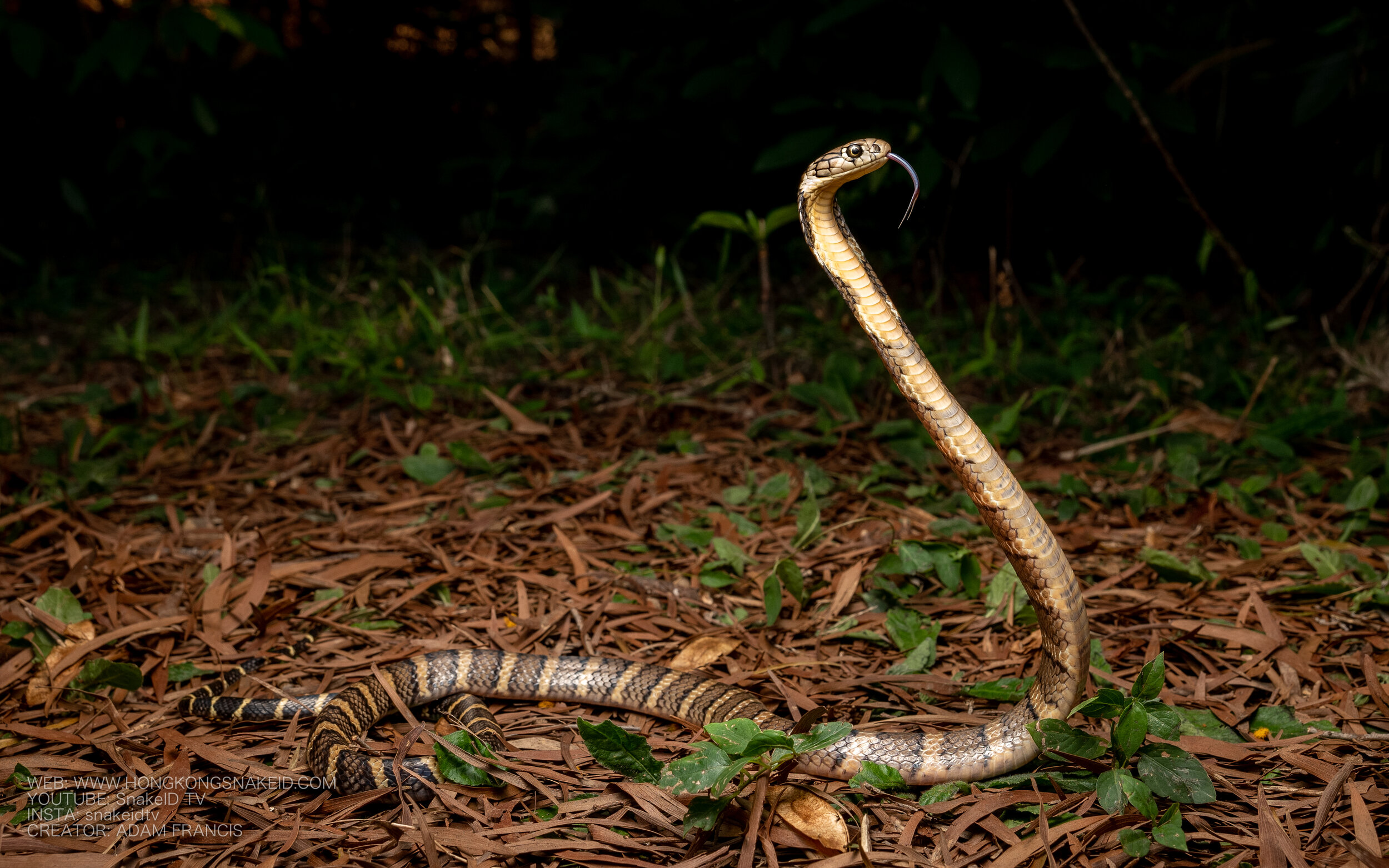
DESCRIPTION
Ranging in color though generally brown/tan in color with distinct banding, occasionally taking on a gold/brown hue. Very large, King Cobras can grow to lengths of exceeding 3 meters in Hong Kong. When not displaying its hood the King Cobra can easily be mistaken for a rat snake at a quick glance. Juveniles are very different from mature specimens displaying very sharp contrasting black and yellow bands. Both mature and juvenile King Cobras will display their hood and rise up when defensive. The hood of the King Cobra is more narrow than that of the Chinese cobra. Adults also show very large head scales outlined in black..
BEHAVIOR
Active mostly during the day, the King Cobra is a rare venomous snake to encounter in Hong Kong. As with many cobras if the King Cobra thinks it can get away it will most likely flee, but if it feels cornered or that you could easily give chase it will hood up, rise off the ground and stare you down while hissing, growling and intermittently striking at the air as a warning. Generally speaking it will not attempt to chase or bite if you are far enough away and standing your ground but all cobras are capable of rushing forward to intimidate and possibly strike which can cause people to panic and fall down leaving them vulnerable to a bite. Due to the King Cobras size they can actually be quite formidable as a fully grown adult can rise off the ground and be nearly eye level with an adult human. They are also remarkably fast and capable of striking if scared. King Cobras have short fixed fangs at the front of their mouth that are highly efficient at delivering venom and any bite should be treated as an envenomation and immediately treated. King Cobras in specific are known as one of the worlds most dangerous snakes not only due to their defensive behavior but also the amount of venom they can deliver in a single bite.
HABITAT
King Cobras are found on Lantau, Sai Kung and the New Territories, but are not believed to have stable breeding populations on Hong Kong Island where sightings are extremely rare. They eat rodents and lizards bit most commonly seek other snakes as food and as such can be found from forested areas to areas around lakes and rivers as well as water culverts and jogging trails.
MISTAKEN IDENTITY
NO SNAKE SHOULD EVER BE HANDLED BY ANYONE BUT EXPERTS: King Cobras as with Chinese Cobras can be easily confused with Common Rat Snakes for the less experienced observer. There is no great general differentiator between the King and the Common Rat Snake for the layman other than the Kings size at maturity, juvenile banding and its hooded posture when defensive. No Cobra should ever be approached, and rat snakes should be observed from a distance to avoid accidents due to miss-identification.

